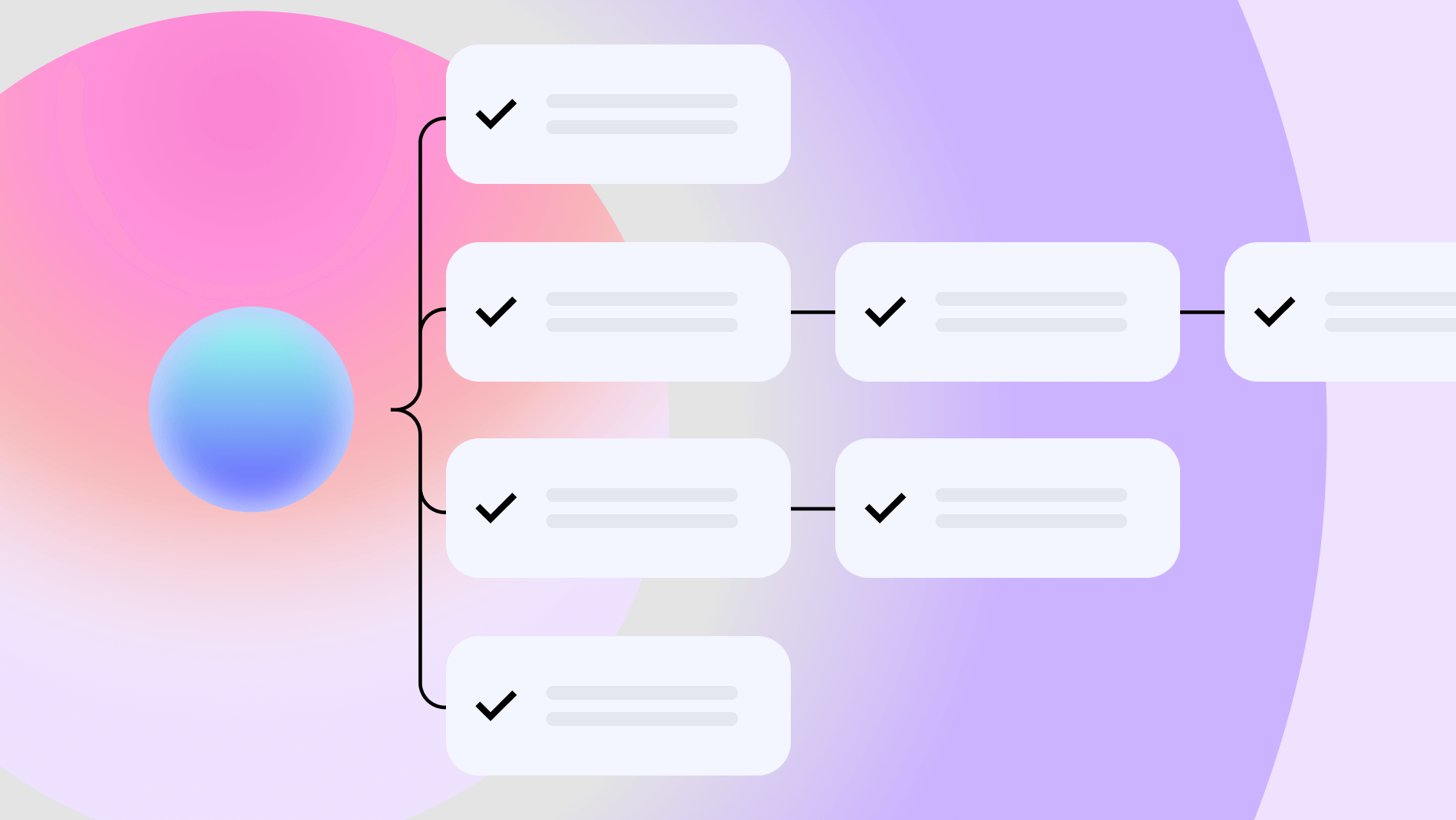AI agents at work
– 7 min read
The Speed-Credibility Standard: redefining launch excellence
How GTM teams can achieve a decisive edge with compliant, scalable content execution

At the point of launch, pharma companies have invested an average of 10–12 years of R&D and more than $2 billion. Yet despite this investment, Bain and McKinsey analyses show sobering benchmarks: about half of launches underperform, with two-thirds failing to meet first-year expectations. Companies that stumble early usually keep lagging.
Half of all launches underperform, and two-thirds fail to meet first-year expectations.
This execution risk is compounded by today’s shifting landscape. Launches themselves are accelerating — some leading companies have tripled the speed of their regulatory submissions since 2020 — while product portfolios are increasingly targeting smaller patient populations and multiple indications, driving a higher number of launches with less headroom. The result is not just more launches, but more complex ones: rare diseases, accelerated approvals, and personalized medicine all demand precise evidence communication and tailored content.
Because of this, GTM teams must now deliver exponentially more content, across more stakeholders, faster than ever before. Yet the systems built to manage that content haven’t evolved. They can’t keep up with the pace, regulatory scrutiny, or cross-functional coordination modern launches demand.
The opportunity is clear: those who can scale regulatory-grade content at launch velocity gain a competitive advantage. Those who can’t fall behind in speed, share of voice, and overall launch impact. This is the new bar for launches — what we call the Speed-Credibility Standard.
From market pressure to content overload
Every modern launch is a content engine — but the stakes are higher than volume alone. Launches succeed or fail based on whether regulators, payers, prescribers, and key opinion leaders see a consistent, defensible scientific story. From there, GTM teams must translate that story into tailored materials.
What begins as a handful of core assets rapidly multiplies into dozens of derivative workflows, each requiring compliance review, cross-functional input, and local adaptation, including:
- Scientific and medical evidence distilled into core narratives and publication-aligned materials.
- Global value dossiers (GVDs) transformed into payer submissions and localized market access decks.
- Training and enablement content developed into launch playbooks and affiliate FAQs.
- Patient engagement materials adapted for literacy, culture, and channel.
- Marketing assets customized across digital, print, and affiliate markets.
This expanding range of content, and the speed at which it must be delivered, is where legacy workflows break down. The result is an execution gap where infrastructure can’t keep pace. Meeting the Speed-Credibility Standard is what separates launches that sustain impact from those that stumble, making it essential for GTM teams to scale compliant, high-quality content across functions rapidly.
Launch workflows need more than generative AI
Despite the efficacy of generative AI for content generation, the real-world steps of creating, adapting, and approving launch content are too complex for off-the-shelf tools. Extracting source material, coordinating cross-functional input, iterating draft cycles, and securing regulatory and legal approval are all out of scope for prompt-based tools.
Consumer-grade generative AI is a starting point, but launches demand more. Without auditability, provenance, and jurisdictional guardrails, content that looks polished can stall in MLR review or fail in affiliate adaptation. That’s why launches require systems that don’t just generate text, but orchestrate compliant workflows — carrying forward brand guidelines, regulatory standards, references, and version control at velocity.
What regulatory-grade AI means for pharma GTM teams
Regulatory-grade AI takes the power of generative AI and combines it with the content orchestration needed for pharma.
A framework that combines generative AI, agentic AI, and autonomous agents with governance, auditability, and jurisdictional rule enforcement so scientific content is defensible, reusable, and compliant at scale.
By leveraging regulatory-grade, process-aware, modular agents that are maintained by experts, teams can build a stack that incorporates:
- Generative AI for flexible drafting.
- Agentic AI for orchestrating workflows, ensuring compliance, and supporting content reuse.
- Autonomous agents for executing high-volume, repeatable tasks reliably at speed.
Each agent is designed to fit into existing workflows, automatically carry forward compliance and brand rules, and scale incrementally across functions. In doing so, they enable the cross-functional agility that pharma launches demand. Medical, Market Access, and Commercial can all communicate the same defensible scientific message with speed and credibility, turning content execution into infrastructure.
Where regulatory-grade AI delivers
Pharma launches need compliant, adaptable content across all GTM-critical functions — but success doesn’t come from trying to solve everything at once. The power of regulatory-grade AI is its ability to start small and scale.

This structured adoption journey shows how regulatory-grade AI compounds its value over time, building the connected system teams need to meet the Speed-Credibility Standard.


AI agents in the enterprise
Read our AI agents in the enterprise blog
Freeing capacity to support more launches at once
Every launch adds pressure in an increasingly competitive market. Too often, GTM teams absorb the rising content burden of reformatting slides, duplicating HCP messaging, or briefing agencies. These non-strategic tasks drain budgets and slow execution.
Regulatory-grade AI changes the equation by handling repeatable, regulated content tasks with workflow-aware agents. The result is shorter content cycles, less rework, and greater throughput. Instead of spending hours on manual execution or outsourcing, GTM functions can redirect energy toward market-facing strategy and competitive positioning.
The impact is practical and immediate: pharma organizations can support more launches simultaneously, without expanding headcount or burning out teams.
Proving the ROI of regulatory-grade AI

AI ROI calculator
Read our blog
Regulatory-grade AI delivers value on multiple levels from individual productivity to organizational agility. Measuring ROI means looking beyond hours saved and asking how launch teams gain speed, resilience, and a competitive edge.

It helps to view ROI through a four-pillar lens:
- Efficiency and employee productivity: automating entire workflows (not just tasks) frees GTM team members from repetitive work, with results like 90,000 human hours saved and 80% time savings on knowledge search and research.
- Revenue generation and competitive growth: faster launch enablement and better content alignment strengthen share of voice, accelerate market entry, and improve launch returns.
- Risk mitigation and compliance resilience: traceability, auditability, and line-level citations reduce costly errors, in some cases, compressing legal review cycles from six weeks to five days.
- Business agility and innovation: content reuse and automated adaptation reduce reliance on external partners, with reported outcomes of $80M.

66%
faster time to market
Read the full customer story
Launch excellence, powered by regulatory-grade AI
Launch excellence now depends on execution at speed: scaling compliant, high-quality content across GTM functions and geographies without duplication, bottlenecks, or burnout. Regulatory-grade AI provides the infrastructure for this shift. By connecting people, processes, and content through modular, workflow-aware systems, it transforms launch execution from a constraint into a competitive advantage, ensuring teams can keep pace with launch velocity and sustain success in an increasingly complex market.
Launches don’t fail for lack of science. They fail for lack of scalable, compliant execution. Discover how WRITER helps life science teams meet the Speed-Credibility Standard and build a smarter foundation for repeatable launch success.
